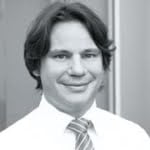Groomed knowledge


The introduction of successful knowledge management is a time-consuming process in which an open knowledge culture must develop among all employees. For this reason, Infomotion has established knowledge management (WM) as a core task since 2005 and has since integrated all company units into WM processes.
These measures and methods can be structured in the form of a building. At the center of this knowledge building is effective internal communication combined with close coordination of all those responsible for WM. The aim is to build on the individual strengths of employees, identify knowledge gaps and expand the company's overall know-how in a targeted manner.
To achieve a higher level of maturity, knowledge management requires a sound theoretical basis and consideration as an independent management task. Three years ago, Infomotion appointed a knowledge manager who transferred the previously selected approaches to Probst's building block model.
The knowledge house groups all the tools used into five areas. The foundation is formed by the company's own knowledge store and employee development, which are closely linked.
The knowledge store documents both the consultants' expertise and the organizational know-how. The company uses the WM system Knowledge in Motion (KIM) for storage and distribution.
In this pool, the collected corporate knowledge is sorted thematically on the basis of a wiki system and is available to all employees via a search function. They, in turn, are encouraged to contribute new knowledge and project experience in the form of articles.
An incentive is created by a points system that rewards active participation. KIM ensures that knowledge is not lost even if a consultant leaves the company. Access to contributions, procedure models and project standards saves consultants time and brings shorter project runtimes for the customer.
A number of tools are anchored in the employee development area to help new employees quickly find their feet. These include a two-day welcome event introducing the topics of the company, human resources, knowledge management, fulfillment, business unit management and etiquette.
A mentoring program supports the individual advancement of employee potential. Each employee is assigned a sparring partner who drives individual development.
Orient knowledge development to market development
The core area of the WM house includes at the same time measures for the distribution of knowledge as well as tools for knowledge development. For this purpose, the company provides its employees with various communication platforms.
Each employee chooses a field of competence in which he or she would like to develop further and set thematic priorities in addition to day-to-day business. In the past few months alone, 14 fields of expertise have been launched to generate knowledge in the area of SAP.
Starting with the evaluation of new functionalities, through the bundling and documentation of best practices, to the development of partial solutions, consultants dedicate themselves to selected issues with the aim of generating new ideas and expanding know-how. Example: After initial experiences with SAP BusinessObjects 4.0 (BO4 for short), the question of the system's performance arose several times.
The BO4 Stress Test competence area was created with the task of performing an automated performance test of a BO4 system and collecting evaluations of the system load during the test.
Another area of expertise takes into account the current market development and increased demand for in-memory database systems. In this context, employees are addressing the question of what reporting options are available with BO4 when SAP Hana is used as the database.
The aim in this field of expertise is to critically review the manufacturers' statements and to identify weak points and possible solutions in detail prior to customer deployment in order to ensure optimum consulting quality.
In addition, there are ten to 20 working days per year for these internal projects. The employees present the results at a Competence Day, which is held three times a year. In addition to the results of the competence fields, scientific papers and best practices are also presented on this day.
The build-up of knowledge about the areas of expertise is supplemented in a targeted manner by strategic projects. Since the beginning of 2012, for example, Infomotion has set up an internal SAP project to evaluate the use of Hana in realistic environments. For this purpose, a hardware environment was set up to enable tests to be carried out in a realistic environment.
Expert roles have also been established for the further development of various topics, which jointly solve technical problems and create innovations. Since mid-2012, an expert has been looking after the topic of mobile BI and driving forward knowledge development for mobile solutions, also in the context of SAP BO.
Currently, three of the ten expert groups deal with SAP-related topics. One group is dedicated to specific issues relating to Business Warehouse and Hana. Other groups are evaluating new functionalities of SAP BO, while still others are taking a closer look at the topic of "planning with a focus on SAP Business Planning and Consolidation".
Involvement of science
In addition to generating knowledge through competence fields and expert groups, Infomotion also generates knowledge through cooperation with universities. Positions for bachelor's as well as master's theses are awarded.
In this context, scientific papers on SAP topics were written, dealing with the potential benefits of a Business Warehouse 7.3 on Hana under consideration of the reporting performance and the dependencies in the data modeling.
Currently, students are also researching the topic of georeporting with SAP BO and are investigating how geoinformation can be visually visualized on the basis of various maps. The results obtained are archived in an in-house business intelligence library and made available to all employees.
Knowledge as a central resource
The superstructure of the knowledge house is formed by methods of planning and control. In order for knowledge management to become a continuous process from the idea to the customer project, an evaluation of the know-how is carried out here using various tools.
In addition to the analysis of the existing knowledge portfolio, this also includes a SWOT analysis of the knowledge management activities as well as key figures. At its core is the representation of the knowledge portfolio as a matrix with the axes topics and technologies.
This includes current topics from customers, suggestions from employees, ongoing projects and research results from analysts on the business intelligence market. At this point, each business unit manager also prioritizes the topics, the current and expected future level of knowledge, and the current and future headcount.
In coordination meetings between management and knowledge management, sales figures are also mirrored in the business units and targets for the individual units are derived on the basis of the knowledge portfolio that has been created.
At the same time, an analysis of topics is carried out in which the knowledge gained is taken up. To the same extent, new ideas are generated for internal fields of competence and special topics, which are then incorporated into the company's knowledge portfolio. The knowledge house ultimately reflects all measures and methods that are necessary for the process of successful knowledge management.
The knowledge and expertise of employees are the most important assets in all business enterprises. This is why the constant expansion of know-how is of central importance, which should also be reflected in the anchoring of knowledge management in corporate guidelines, management principles and personnel support.





